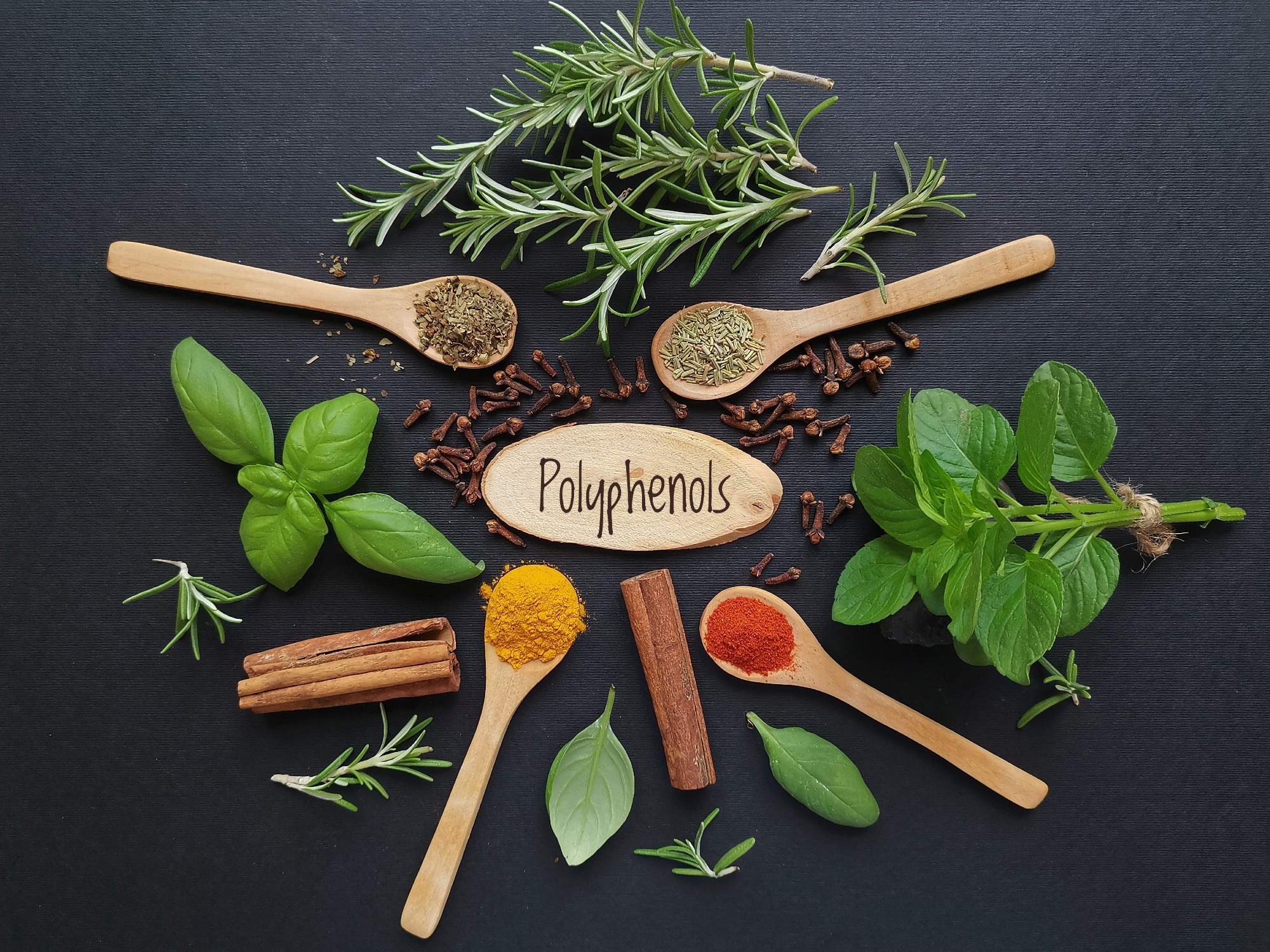In a recent study published in Nutrients, a group of researchers explored how regular polyphenol intake from diet affects gut microbiota composition in healthy adults.
 Study: Relationships between Habitual Polyphenol Consumption and Gut Microbiota in the INCLD Health Cohort. Image Credit: Danijela Maksimovic/Shutterstock.com
Study: Relationships between Habitual Polyphenol Consumption and Gut Microbiota in the INCLD Health Cohort. Image Credit: Danijela Maksimovic/Shutterstock.com
Background
Polyphenols, found in a wide range of foods and drinks, are phytochemicals known for their potential health benefits, including their influence on gut microbiota.
These compounds can impact health through direct cellular effects and by modifying gut microbial composition, producing bioactive metabolites that affect various physiological processes.
However, the specific effects of habitual polyphenol consumption, particularly from everyday foods and culinary herbs and spices, on gut microbiota are not fully understood.
Research indicates that polyphenols can enhance the abundance of beneficial bacteria and reduce harmful ones, contributing to improved gut health and potentially influencing broader health outcomes like inflammation, oxidative stress, and cardiovascular health.
Further research is needed to clarify the effects of habitual polyphenol consumption on gut microbiota and its implications for human health.
About the study
The present study conducted a secondary analysis of data from the International Cohort on Lifestyle Determinants of Health (INCLD Health), focusing on baseline data to examine the relationship between dietary polyphenol intake and gut microbiome composition.
A subset of 96 participants was selected based on the completion of specific surveys and tests, excluding those with certain health conditions or antibiotic usage.
Deoxyribonucleic acid (DNA) was extracted from faecal samples using a specific kit and sequenced to identify microbial DNA.
The sequencing targeted the V4 viz fourth variable region of the 16S ribosomal ribonucleic acid (rRNA) gene, with subsequent processing to identify and classify microbial taxa. The data underwent filtering and normalization to ensure reliability using an online platform designed for microbiome data analysis.
Polyphenol intake was quantified based on dietary data collected through a food frequency questionnaire, with an emphasis on identifying polyphenol content in various foods and beverages, excluding minimal polyphenol sources.
The polyphenol intake assessment considered the total daily consumption and the frequency of herb and spice use known for their high polyphenol content. This approach allowed for a detailed analysis of polyphenol exposure from regular dietary habits.
Statistical analysis explored gut microbiota diversity and its relation to polyphenol intake. This included examining differences in microbial diversity and abundance across varying levels of polyphenol consumption.
Study results
The study analyzed the characteristics and dietary habits of 96 participants, predominantly white, non-Hispanic females with normal cardiometabolic measures. Most were non-smokers and moderate alcohol consumers.
Dietary polyphenol consumption varied, with flavonoids being the most consumed class. Commonly used herbs and spices include black pepper, cinnamon, ginger, onion, garlic, and turmeric, with varying polyphenol content.
Microbial community analysis, stratified by polyphenol consumption, showed Firmicutes as the dominant phyla across all groups, without significant differences in microbial diversity or community structure between low, medium, and high polyphenol consumers.
However, the abundance of specific microbial taxa varied with dietary polyphenol levels. Higher polyphenol consumption was associated with a greater abundance of Lactobacillus and Sutterella and a lower abundance of the Eubacterium ventriosum group, Ruminococcus torques group, Bacteroides, and Enterococcus.
The frequency of polyphenol-rich herb and spice use similarly did not affect overall microbial diversity but influenced specific taxa abundance.
High-frequency users showed a different microbial profile than low-frequency users, with variations in Lachnospiraceae UCG 004, Lachnotalea, and Lachnospiraceae UCG 001 abundance.
Correlation analyses revealed significant relationships between total and specific classes of polyphenol consumption and microbial taxa. Lactobacillus and Sutterella abundance positively correlated with total polyphenol, flavonoid, and lignan consumption.
Conversely, Eubacterium ventriosum, Ruminococcus torques group, Bacteroides, and Enterococcus abundances are inversely correlated with polyphenol intake.
Specific polyphenol classes also showed varied correlations with different microbial taxa, highlighting the complex interplay between diet and gut microbiota.
Conclusions
The study examined the link between dietary polyphenol intake and gut microbiota in healthy adults, focusing on consuming polyphenol-rich foods and herbs/spices.
Findings revealed specific gut microbial patterns associated with polyphenol consumption levels, showing an increased abundance of beneficial microbes like Lactobacillus and Sutterella with higher polyphenol intake.
Conversely, certain microbes showed an inverse relationship with polyphenol consumption, indicating complex interactions between diet and gut health. The study also identified potential microbial markers for polyphenol-rich herb and spice use.
The findings highlight the complex interaction between dietary polyphenols and gut microbiota, indicating that polyphenols might influence gut health.
This suggests a promising role for dietary polyphenols in gut health modulation, emphasizing the importance of further research to understand these relationships better.
Post Disclaimer
The information contained in this post is for general information purposes only. The information is provided by "Spicing up health: How culinary herbs and spices may boost gut health through polyphenols "and while we endeavour to keep the information up to date.
Legal Disclaimer
We do not claim to cure any disease which is considered’ incurable ‘ on the basis of scientific facts by modern medicine .The website’s content is not a substitute for direct, personal, professional medical care and diagnosis. None of the medicines mentioned in the posts ,including services mentioned at "medicineguide.us" should be used without clearance from your physician or health care provider.
Testimonials Disclaimer– : Results may vary, and testimonials are not claimed to represent typical results. The testimonials are real, and these patients have been treated with homeopathy treatment from our clinic . However, these results are meant as a showcase of what the best, Medicine can do with their disease contions and should not be taken as average or typical results.